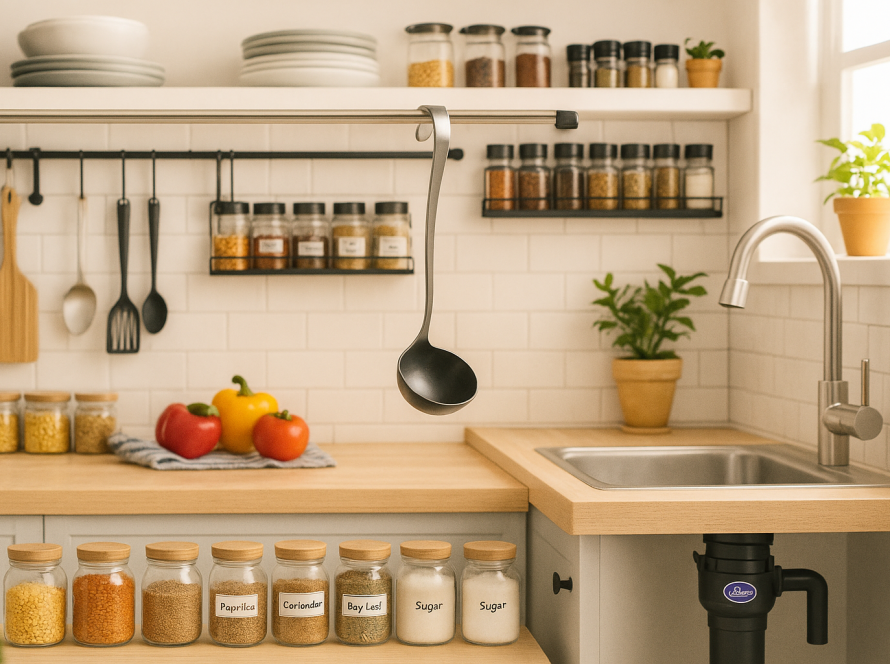It is 10:45 p.m. The last table has left. The final dessert plate is scraped clean. The kitchen is quiet except for the hum of the fridge. And then, the head chef says the words every cook dreads: “Take the bin out.”
If you have ever worked in a commercial kitchen, you know this moment. The shift has been long, your feet are aching, and the garbage bag feels heavier than your will to keep standing. Food scraps spill down your apron. The smell clings to your clothes on the bus ride home. It is a small but constant misery in an otherwise rewarding job.
This is not just about inconvenience. In busy kitchens, the bin run is a bottleneck for hygiene, efficiency, and morale. But it does not have to be this way.
The Realities of Food Waste in Commercial Kitchens
A commercial kitchen is a high-speed environment where waste happens fast. Vegetable peels pile up during prep. Bones and trimmings stack in containers. Uneaten portions come back from tables. By the end of service, bins are overflowing.
In many restaurants, cafés, and catering operations, kitchen waste is still handled the old-fashioned way, collected in bags, carried through service areas, and dumped outside. Not only is this inefficient, but it also risks cross-contamination, attracts pests, and creates unpleasant working conditions.
A 2023 study by the Food and Agriculture Organization found that food waste management is among the top five operational headaches for restaurant owners, right alongside staffing shortages and rising ingredient costs. The bin run is the physical manifestation of that headache.
A Night in the Life: One Chef’s Story
Meet Anil, head chef at a mid-sized hotel kitchen. On a busy Saturday night, he and his team plated over 200 meals. Between orders, they push food scraps into the bin. By the end of the shift, the bin weighs more than 20 kilos.
“I used to joke that the worst part of my job was the last 15 minutes,” Anil says. “The bin was always heavy, the floor was slippery, and the smell… you never get used to it. We had to take turns because no one wanted to be the one walking it through the dining room to the back alley.”
Anil’s team installed a commercial crusher last year. Now, most food waste goes directly into the unit, where it is ground into fine particles and flushed away through the drainage system. “It sounds small, but it changed everything. No smell, no late-night garbage trips, and we clean up faster,” he adds.
Why the Bin Run is More Than an Inconvenience
For a commercial kitchen, waste management is about more than just aesthetics. Poorly handled waste can:
- Slow down the cleanup process and extend staff hours.
- Increase the risk of pests and contamination.
- Affect kitchen hygiene scores during inspections.
- Lower morale among staff who already work long, demanding shifts.
When waste is reduced at the source using tools like a crusher for kitchen, the impact is immediate. Cleanup is faster. Staff can focus on sanitizing and restocking rather than hauling heavy bags outside. And morale improves because unpleasant tasks are minimized.
The Case for Commercial and Industrial Crushers
A commercial crusher or industrial crusher is designed specifically for the demands of a busy kitchen. Unlike small domestic units, these machines can handle large volumes of mixed food waste quickly. Vegetable scraps, meat trimmings, even small bones—gone in seconds.
For hotels, canteens, and large-scale catering operations, industrial models are particularly valuable. They process higher loads without clogging and are built for continuous use during peak service. The result is less time wasted on manual waste handling and a more streamlined end-of-day cleanup.
Cost vs. Value in a Commercial Kitchen
One concern many owners have is the cost of installing a crusher. But as with most commercial equipment, the real question is value over time. In kitchens where staff hours are precious, saving 20–30 minutes per shift adds up.
Fewer bin runs mean less wear and tear on staff, reduced risk of workplace injuries from lifting heavy waste, and lower cleaning supply costs since bins do not need frequent deep scrubbing. For operations that pride themselves on hygiene and speed, the investment quickly pays for itself.
Imagining the Alternative
Consider two kitchens on the same street. One still relies on the traditional bin run. The other has an industrial crusher.
In Kitchen A, the night ends with two staff members carrying heavy bins through a narrow corridor past stored ingredients. A trail of wastewater is wiped up after. The air smells faintly of fish from the seafood special.
In Kitchen B, waste is processed as it happens. The cleanup team wipes down surfaces, runs the dishwasher, and leaves on time. The kitchen is odor-free and ready for the morning shift.
Which one would you rather work in?
Beyond Restaurants: Who Benefits Most
While restaurants get the most attention in these discussions, commercial crushers also benefit:
- School and corporate canteens, where lunch service creates huge amounts of food waste in short bursts.
- Hospital kitchens, where hygiene standards are non-negotiable.
- Event caterers often deal with unpredictable waste volumes.
In each case, the same principles apply: less manual waste handling, better hygiene, faster turnover between shifts.
The Final Takeaway
The bin run is a universal part of kitchen life, but it is not inevitable. In a profession where every minute counts, reducing waste-handling time can be the difference between ending your shift exhausted or leaving with energy to spare.
For any commercial kitchen struggling with waste chaos, the solution is not more manpower; it is smarter equipment. A commercial crusher, industrial crusher, or crusher for the kitchen does not just remove waste. It removes one of the most dreaded moments of the day.
As Chef Anil puts it, “We used to see the bin run as the necessary evil of the job. Now, we barely think about it. We just clean, lock up, and go home.”
In a world where kitchens are under pressure to be faster, cleaner, and more efficient, that sounds like more than convenience. It sounds like progress.




